Real per capita household disposable income is arguably the most accurate measure of individual living standards.
OECD data showed that in the decade to the March quarter of 2025, Australia experienced the poorest rise in real per capita household disposable income among major English-speaking nations.
Australia’s real per capita household disposable income increased by only 3.5% over the decade to Q1 2025, compared to 8.9% in Canada, 20.6% in the United States, and 8.0% in the United Kingdom.
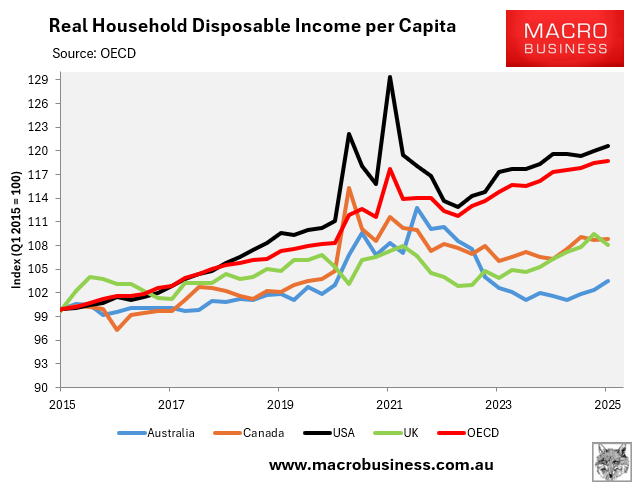
Australia’s 3.5% gain in real per capita household disposable income trailed far behind the OECD average of 18.7% throughout the decade.
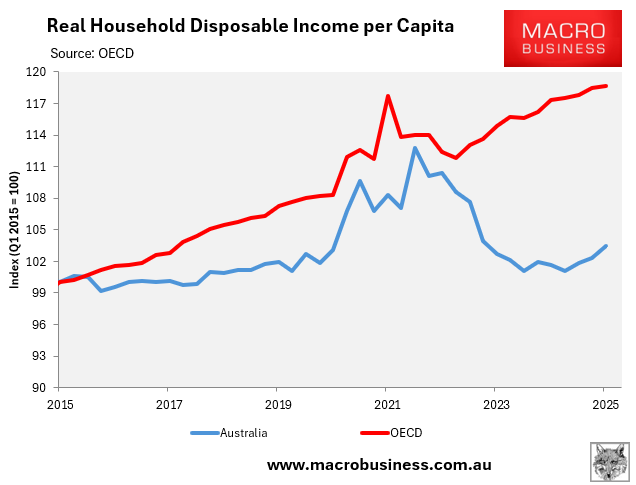
The Australian Bureau of Statistics (ABS) released its June quarter national accounts last week, revealing that real per capita household disposable income is finally increasing after the largest decrease in recorded history.
As seen below, Australia’s real per capita household disposable income increased by 2.4% in 2024-25, the largest rise since the December quarter of 2021.
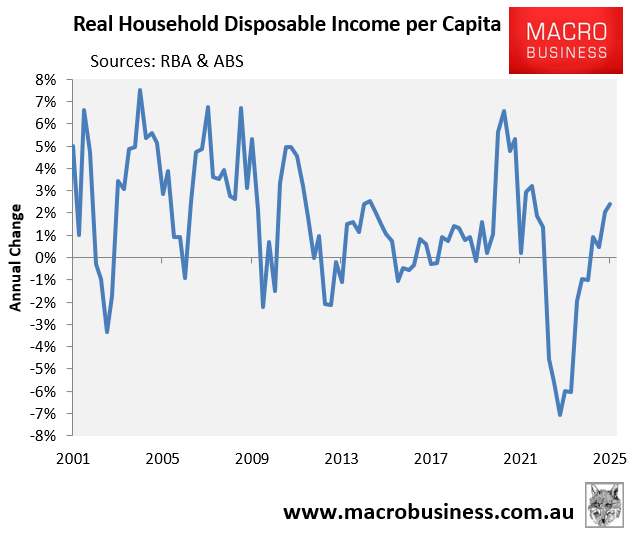
Despite the increase, Australia’s real per capita household disposable income was 6.9% lower than its mid-2022 ‘Covid-bubble’ peak, at around the same levels as five years earlier in Q2 2020.
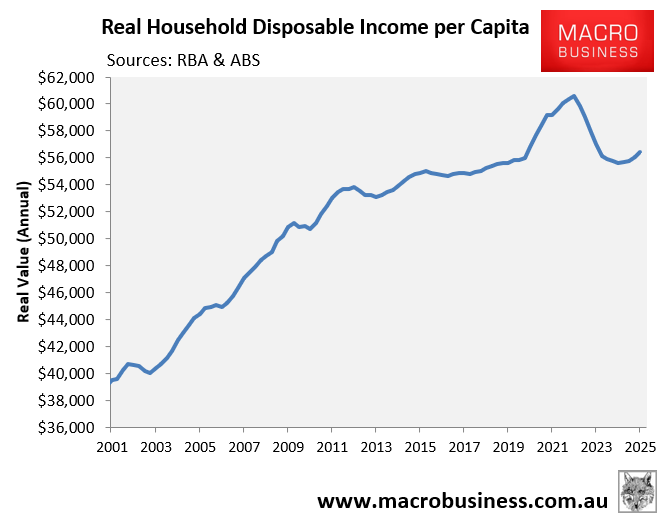
Veteran economist Chris Richardson warned that real per capita household disposable income may not return to the pandemic-era peak until 2037, given Australia’s poor productivity.
Richardson also argued that the latest lift in per capita income was largely for one-off reasons: the stage three tax cuts, falling inflation, and lower interest rates.
“If consumers keep [spending], they will be doing so against a backdrop where ultimately that’s not sustainable unless productivity improves, and nothing much is going to be a magic wand there in the near term”, Richardson said.
“So if we’re going to do better in the long term, it’s productivity or bust”.
“If the Reserve Bank is right that our productivity growth will only be something like 0.7% a year—remembering that 0.7% is a lot higher than we’ve actually achieved for some years—then it will be 2037 before Australian living standards return to where they briefly reached in 2021”, he said.
I noted the same last week, stating that if “Australia’s productivity growth remains stillborn, any recovery in incomes is likely to be gradual”.
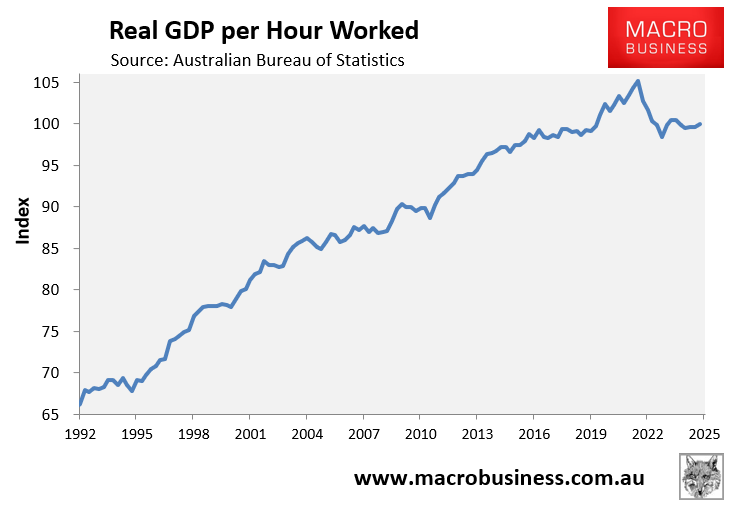
It is hard to see how Australia’s productivity growth can pick up given the federal government is committed to excessive levels of low-skilled immigration and rising energy costs in the name of ‘net zero’.
With these policy settings, Australia’s productivity growth will remain in the slow lane, living standards will erode, and the nation will deindustrialise even further.

